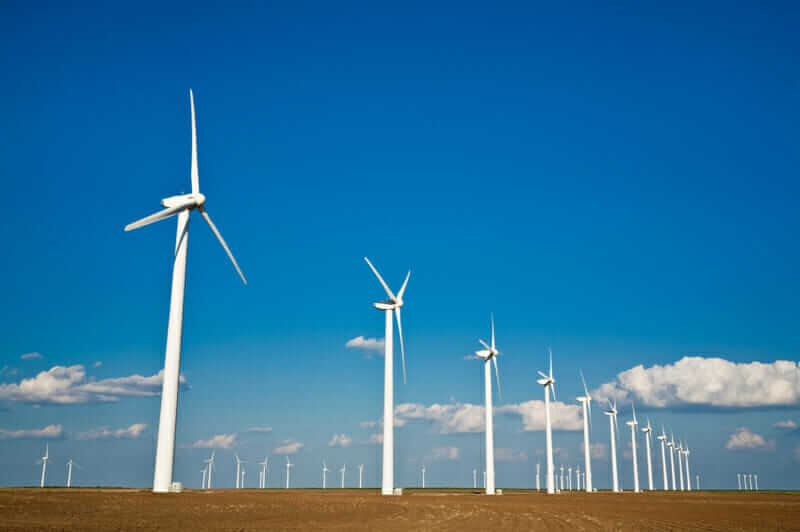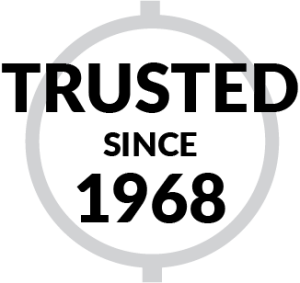
By: Nick Fransted, P.E. | Vice President & CMET Division Manager
Most of us have driven by a wind farm and gazed with awe at the massive, pristine turbines dotting the landscape.
Wind energy has become much more popular in the United States over the past few years, and it is easy to see why. Unlike fossil fuels, wind energy is a renewable energy source and is emissions-free. According to statistics from the U.S. Energy Information Administration, the United States uses a mix of energy sources, with wind energy climbing to 8.4% of total U.S. utility-scale electricity generation in calendar year 2020.
Nick Fransted, P.E. is a Vice President at MTC and has been with the company for nearly 20 years. As the head of the Construction Materials Testing (CMT) Department, Nick gets involved in the engineering of numerous types of projects. He now serves as the Project Manager for the various wind farms that MTC helps construct, dating back to MTC’s very first one – the Lakes Wind Project in Ludington, Michigan in 2010.
“Here at MTC we get to be involved with incredible teams in a large variety of industries,” Nick states. “Wind projects are exciting because of the large scale, the environmental benefits, the variety of locations in the U.S., and the skilled teams we work with.”
Scale is certainly a factor in wind farm projects, not to mention time.
“We have worked on projects as small as 21 turbines up to as large as 108 turbines,” he notes. “Soil and rock conditions play a large role in project durations, as well as turbine deliveries. Therefore, our involvement on projects can last from four months to over a year.”
For MTC, wind farms end up being a group effort.
“Typically, our involvement on other types of construction projects only requires one individual most days,” explains Nick. “On wind farm projects we can have a team of three to six technicians working together onsite to accomplish the project test requirements, not to mention the support staff.”
He goes on to explain the team needs everyone to do their part to have a satisfied client.
“Soil testing is an integral part of every wind project,” he states. “That includes the preparation of temporary access roads to support the heavy construction traffic and critical turbine deliveries, right down to the foundation subgrade testing. Soils testing leads into the foundation mass concrete testing and subsequent backfill testing. We stay involved through the turbine erection, which requires crane pad and grout testing. When a wind project is complete, we have a group of individuals at MTC who can share a similar sense of accomplishment and relatable stories on how they met the challenges together,” he proudly confesses.
Environmental Testing Projects Large In Scale, Timeline, and Manpower
One challenge for clients is that these types of projects can be in remote areas that make testing using local facilities impossible. According to Nick, MTC is well suited to provide testing services on wind projects because of our mobile field testing, quality assurance program, and having good people involved.
“Having the ability to provide mobile laboratories that meet ASTM standards, provide calibrated equipment, and qualified personnel immediately sets MTC up for success,” states Nick. “We have handled close to 4,000 concrete cylinders on a few wind projects. It requires an attention to detail and a process that provides a triple check to ensure cylinders are processed correctly.”
Heather Gibbins is a Field Technician at MTC. She finds the most interesting thing about working on these projects is the process of building a wind farm from the ground up – from building the roads connecting the project sites to the process of erecting the towers.
While Heather enjoys the self-management on such a project, she admits there are challenging parts, too.
“You must be in constant communication with the client from several points of contact in order to succeed on a wind farm,” she claims. “The sites are large, with constantly changing plans. We need to be in contact with both Quality Control and the foremen of the crews.”
Sufficient Staff and Accurate Environmental Sampling, Testing Are Critical
Kipp Cushman has been performing materials testing for MTC for 14 years.
“Staffing is critical in its own right,” states Kipp of wind farm projects. “At most times our MTC crew of three has up to eight crews working at different locations in a multi-square mile project footprint.”
He adds the tasks associated with wind farms can easily turn into three times the work if material samples are not tested properly.
“The biggest challenge for me was probably the speed at which everything happens,” explains Shawn Hutchinson, who has been with MTC since 2015 as a Field Technician. “I overcame it by condensing my notes and using better planning. I’ve since carried that over to regular testing and it has made a big difference.”
Shawn notes the scale of everything on a wind farm is something that is hard to relate to from a distance. “The towers and blades are HUGE!” he states.
His favorite part of working on a wind farm?
“The views,” Shawn says. “There are some beautiful mornings on a wind farm!”
For more information on how MTC can help with your next wind farm project, contact Nick Fransted at nfransted@mtc-test.com or call us at 800.968.8378.


